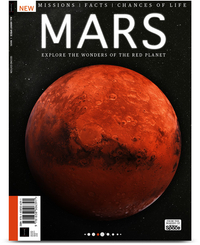5 weird things NASA's Perseverance rover is bringing to Mars
In just a few short days, NASA's Perseverance rover is slated to land on Mars Thursday (Feb. 18), and it's bringing five "hidden gems" along with it.
For decades, NASA has been following a tradition called "festooning," adding fun extras to spacecraft and rovers heading to the cosmos. Pioneer 10 and 11, two spacecraft launched into space in the 1970s, included a plaque that depicted Earth's location in the galaxy as well as pictures of a naked man and a naked woman. The image was the brainchild of Carl Sagan, who wanted any extraterrestrial life who might find the spacecraft to know who we are and how to contact us.
One of the objects included on Perseverance pays homage to this history. A plate fixed to the rover uses the same type of elegant line art used on the Pioneer plaque, this time depicting Earth, the sun, and Mars, all joined by lines of Morse code reading "Explore as one.' And that's just one of the many "hidden gems" on NASA's Perseverance rover.
Related: How to watch NASA's Perseverance rover land on Mars
Perseverance rover's Mars landing: Everything you need to know
Book of Mars: $22.99 at Magazines Direct
Within 148 pages, explore the mysteries of Mars. With the latest generation of rovers, landers and orbiters heading to the Red Planet, we're discovering even more of this world's secrets than ever before. Find out about its landscape and formation, discover the truth about water on Mars and the search for life, and explore the possibility that the fourth rock from the sun may one day be our next home.
10.9 million names
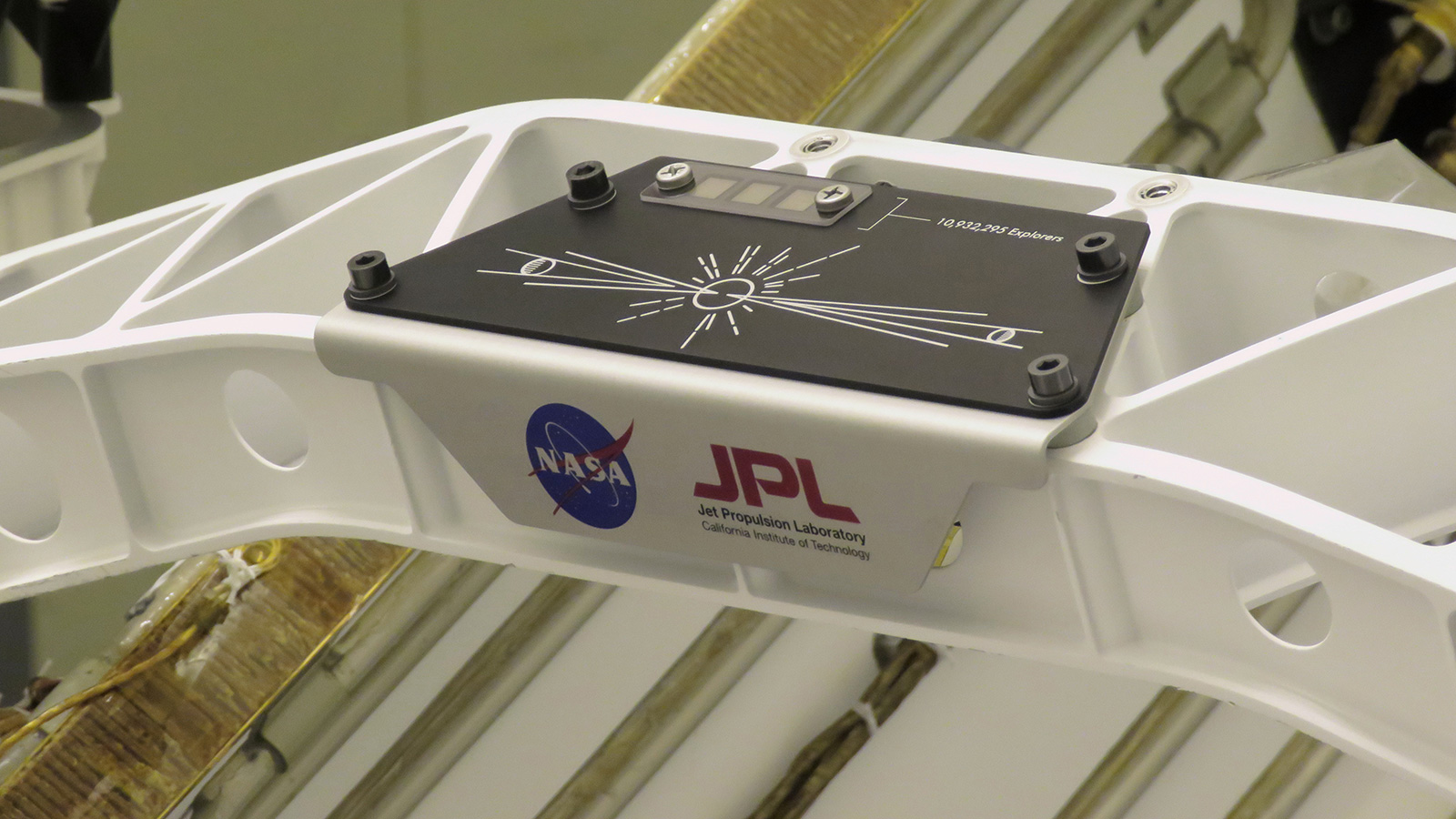
The same plate containing nods to NASA's Voyager and Pioneer plaques contains another special message: three microchips carrying 10,932,295 names from NASA's "Send Your Name To Mars" campaign. This is a tradition for NASA's Mars rovers; the agency's most recent Mars rover Curiosity carried a microchip with 1.2 million names.
Also contained in the microchips are 155 essays from students who made it to the finals of the space agency's rover-naming contest. That contest was won by Alex Mather, a seventh grader from Virginia.
A COVID-19 tribute
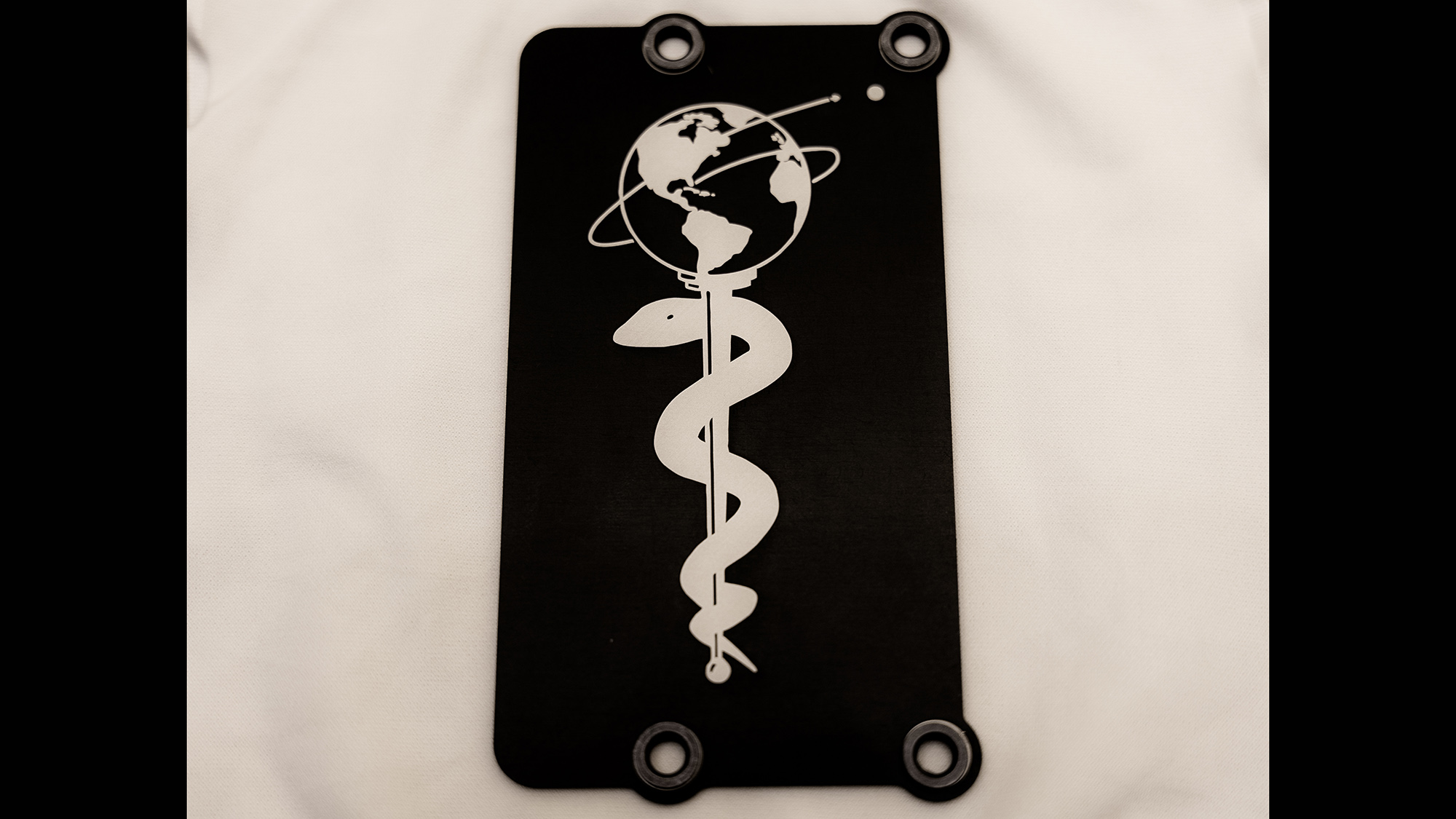
Also included on the rover is a tribute to the healthcare workers who've been fighting the coronavirus pandemic here on Earth. The rover launched in July 2020, just a few months after the virus hit the U.S.
Get the Space.com Newsletter
Breaking space news, the latest updates on rocket launches, skywatching events and more!
The rover team wanted to recognize the impact of the year in which the rover launched, and especially those people on the frontlines of the pandemic. So, the team affixed an aluminium plate on the rover's left side showing the caduceus — the image of a serpent wound around a staff that is used as a symbol of medicine in the U.S. — holding up the Earth.
Mastcam-Z: "Are we alone?"
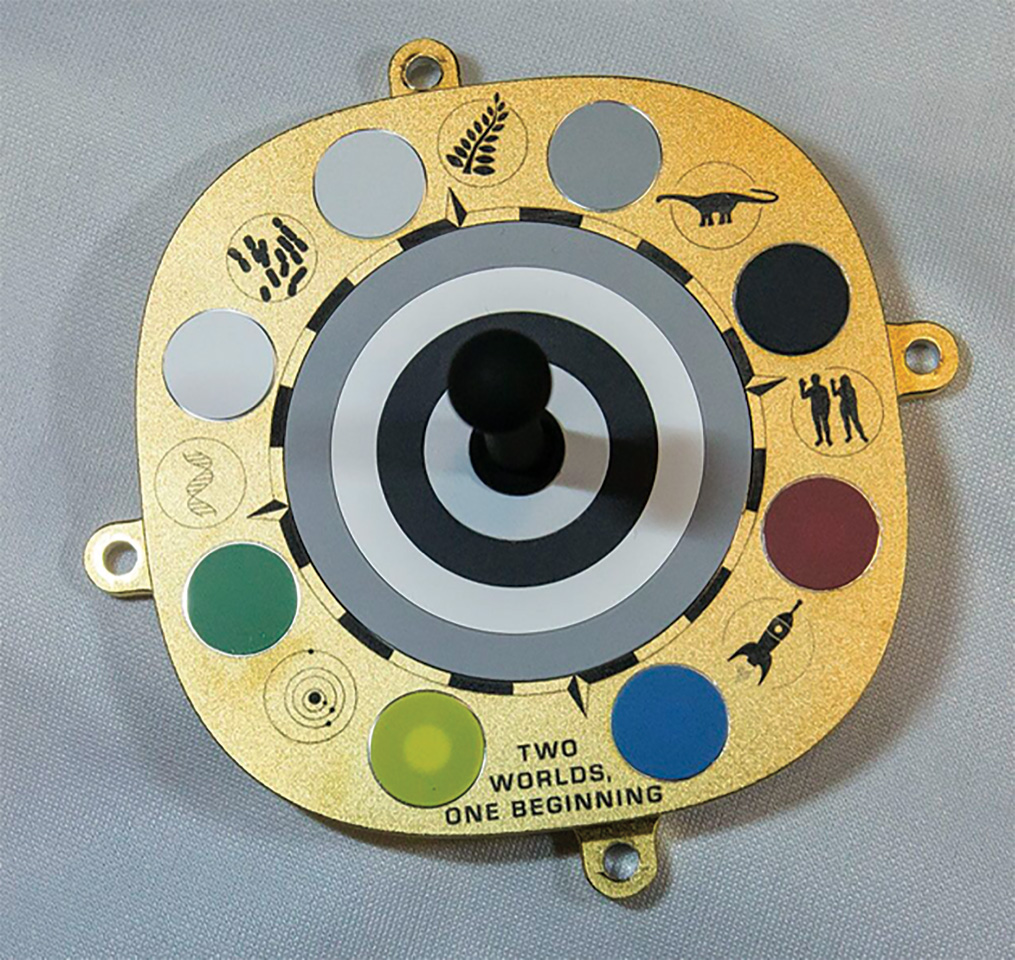
Although plates like those carrying the names and honoring healthcare workers are purely decorative, some of the hidden objects on Perseverance are both decorative and functional. One of these is Mastcam-Z, a pair of zoomable cameras on the rover to capture color panoramas of the Red Planet.
Mastcam-Z is fully functional as a camera, but it also holds a very important message, NASA said in a statement: "Are we alone? We came here to look for signs of life, and to collect samples of Mars for study on Earth. To those who follow, we wish a safe journey and the joy of discovery."
The words "joy of discovery" are also written around the message in a variety of languages, and Mastcam-Z follows in the footsteps of the Pioneer program with images of Earth's early life forms like cyanobacteria, a fern and a dinosaur. There are also line drawings of a man and woman, similar to those on the Pioneer plaques.
SHERLOC
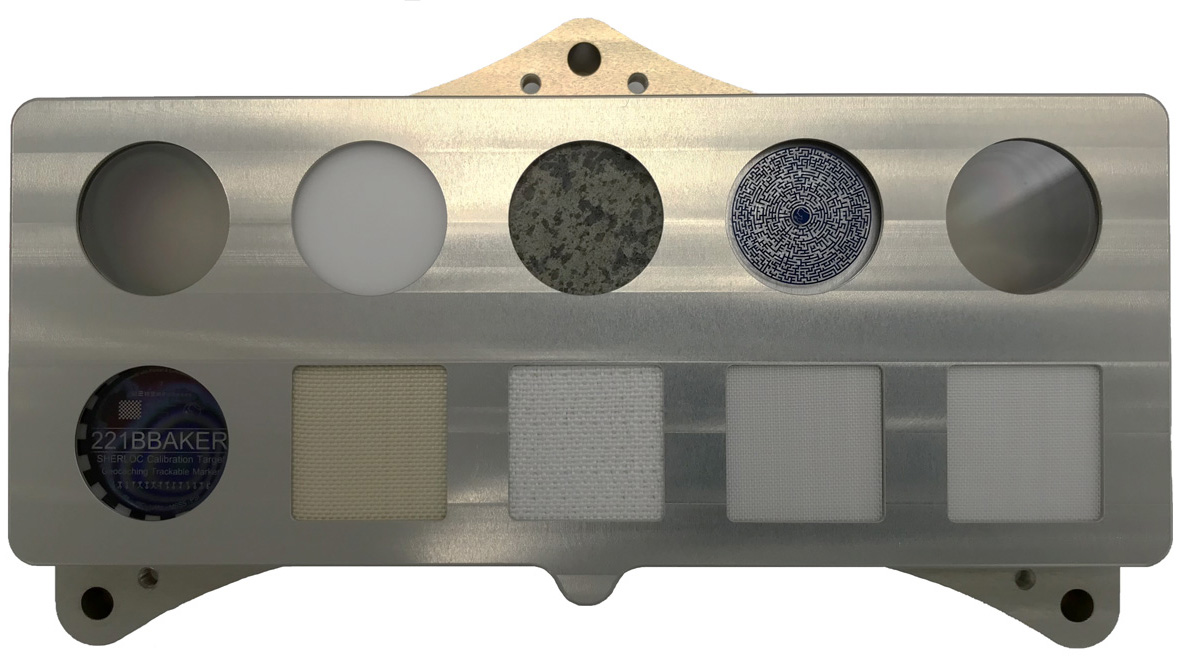
Fans of geocaching — a treasure-hunting game in which people use GPS to hide and find treasures — will enjoy knowing that the rover team hid a special coin made of helmet-visor material on one of the instruments. The NASA statement called it a geocache "more remote than any other."
The coin is part of the calibration target for the SHERLOC (Scanning Habitable Environments with Raman & Luminescence for Organics & Chemicals) instrument and is etched with the address of its famous narrative namesake (221b Baker Street in London).
SHERLOC is also adorned with a slice of Martian meteorite and four other samples of spacesuit materials. While it's cool to have some of NASA's spaceflight history on Mars, the space agency also included the spacesuit material to see how it holds up on the Martian surface.
Mars meteorite
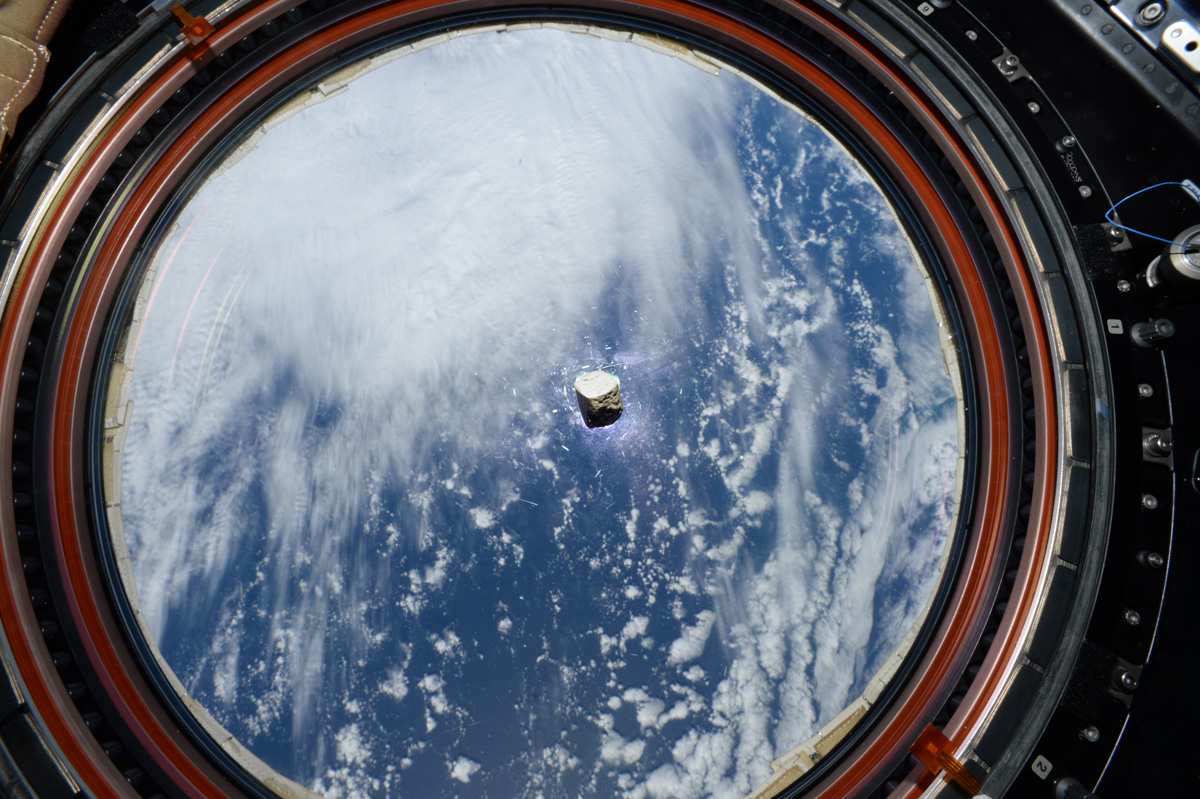
Finally, the scientists who built Perseverance's SuperCam added their own slice of Martian meteorite. SuperCam is a laser put on the rover to vaporize bits of the Martian surface in order to determine the composition. The specific bit of meteorite scientists added to the instrument made a round-trip journey to the International Space Station before it hitched a ride on Perseverance to Mars.
All of these fun little knick-knacks and memorabilia will touch down on Mars on Feb. 18.
Follow Kasandra Brabaw on Twitter @KassieBrabaw. Follow us on Twitter @Spacedotcom and on Facebook.
Join our Space Forums to keep talking space on the latest missions, night sky and more! And if you have a news tip, correction or comment, let us know at: community@space.com.

Kasandra Brabaw is a freelance science writer who covers space, health, and psychology. She's been writing for Space.com since 2014, covering NASA events, sci-fi entertainment, and space news. In addition to Space.com, Kasandra has written for Prevention, Women's Health, SELF, and other health publications. She has also worked with academics to edit books written for popular audiences.
